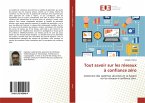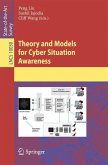The zero-trust model eliminates the perimeter model, which tries to ensure that bad actors stay on the internal trust network. Instead, the zero-trust system recognizes that this approach is doomed to fail, and therefore assumes that bad actors are in the internal network and builds security mechanisms to guard against this threat. To better understand why the perimeter model fails, we examined how the perimeter model came to be. In the early days of the Internet, the network was fully routable. As the system evolved, some users identified areas of the network. Over time, this idea took shape and organizations modeled their security by protecting the private network of trust. Unfortunately, these private networks are not as isolated as the original private networks. The end result is a very porous perimeter, often breached in regular security incidents. With the shared understanding of perimeter networks, we are able to contrast this design with the zero trust design.








